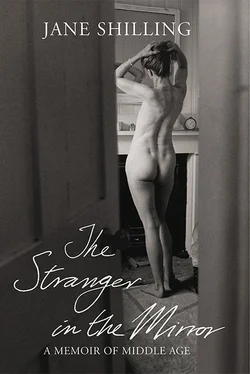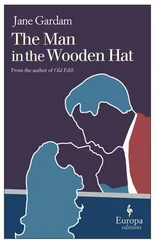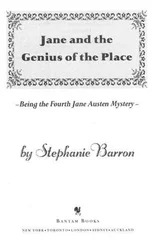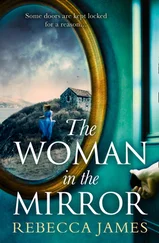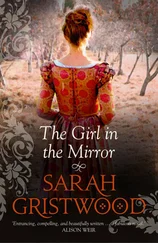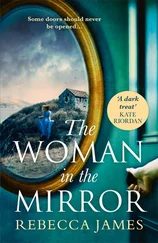In the nineteenth-century novels for whose anaesthetisingly plotty narratives I developed a passion in my mid-teens, an interest in dress often appears as a signifier for moral imbecility, if not actual vice. Emma Bovary is the archetype of the tragic heroine whose fatal flaw of character is chronicled in details of haberdashery, millinery and rouge, but she is a close cousin to Trollope’s adventuress Bella Trefoil, Edith Wharton’s Lily Bart, even Dickens’s Little Em’ly, whose future ruin is dismally prefigured in a childish love of adornment: the blue bead necklace that is the first thing the child David notices about her; the innate vulgarity of her innocent wish, ‘If I was ever to be a lady’ to dress her weatherbeaten fisherman uncle in ‘a sky-blue coat with diamond buttons, nankeen trousers, a red velvet waistcoat, a cocked hat, a large gold watch [and] a silver pipe…’
A reading of the heavier-handed nineteenth-century novelists may lead one to suspect the motives behind the authors’ symbolic use of clothing imagery. The conflation of plain clothes with virtue and elegance with vice can appear to spring less from an admiration of womanly modesty than from a dislike of females indulging in any form of self-expression at all – even if mute and exclusively confined to bonnets and shawls.
But two of the most articulate and strong-minded of these heroines approach the question of self-adornment from fascinatingly opposed perspectives. In Henry James’s Portrait of a Lady there occurs a telling conversation between the heroine, Isabel Archer, a young woman infused with passionate idealism in everything she undertakes and her nemesis, the subtle, deeply attractive, profoundly wicked and entirely worldly 40-year-old Madame Merle. Early in their friendship the young woman and the older fall to discussing the nature of the self.
‘“What shall we call our ‘self’?”’ asks Madame Merle.
‘Where does it begin? where does it end? It overflows into everything that belongs to us – and then it flows back again. I know a large part of myself is in the clothes I choose to wear. I’ve a great respect for things ! One’s self – for other people – is one’s expression of one’s self; and one’s house, one’s furniture, one’s garments, the books one reads, the company one keeps – these things are all expressive.’
‘“I don’t agree with you,”’ Isabel responds:
‘I think just the other way. I don’t know whether I succeed in expressing myself, but I know that nothing else expresses me. Nothing that belongs to me is any measure of me; everything’s on the contrary a limit, a barrier, and a perfectly arbitrary one. Certainly the clothes which, as you say, I choose to wear, don’t express me; and heaven forbid they should!’
‘You dress very well,’ Madame Merle lightly interposed.
‘Possibly; but I don’t care to be judged by that. My clothes may express the dressmaker, but they don’t express me. To begin with it’s not my own choice that I wear them; they’re imposed upon me by society.’
‘Should you prefer to go without them?’ Madame Merle enquired in a tone which virtually terminated the discussion.
Isabel’s fear of the power of objects to reify the person they adorn proves well founded. She, like Dorothea Brooke, the heroine of George Eliot’s Middlemarch , believes that to bedeck the person is to place a barrier between themselves and the pure, stripped, unmediated engagement with the world of ideas and ideals that they believe lies somewhere just beyond the restraining conventions of the material world in which they live. It does not occur to either woman that the semiotics of clothes will get them anyway: that a plainness of dress is as eloquent and studied a performance as the most elegant tenue .
There is a school of twentieth-century feminist thought that shares Isabel and Dorothea’s austere distaste for self-adornment. In The Last Gift of Time , her memoir of life beyond 60, the American scholar, Carolyn Heilbrun, included a chapter ‘On Not Wearing Dresses’ in which she described exultantly how in late middle age she liberated herself from the conventional feminine clothing that feminists of her generation referred to as ‘drag’, and adopted instead a comfortable ‘androgynous’ uniform of trousers and tunic.
‘Androgyny defeats semiotics,’ she wrote, arguing that by dressing in a neutral version of male clothing, a woman can achieve the tricky dual object of making a political statement – a refusal to be defined in terms of her ‘femininity’ – while remaining, semiotically, invisible, so that nothing in her appearance obscures the essence of her ‘self’. And she quotes Susan Brownmiller: ‘The nature of feminine dressing is superficial in essence. To care about feminine fashion, and do it well, is to be obsessively involved in inconsequential details on a serious basis. There is no relief…’
I thought that ‘Androgyny defeats semiotics’ was a good slogan, but like most slogans, more of a wish than a truth. And Brownmiller’s ideas about fashion seemed an unexpectedly reductive view of a rich and complicated area of human experience – as though someone tone deaf or colour blind should dismiss music or art as ‘superficial in essence’, and assert that to be captivated by them is to be ‘obsessively involved in inconsequential detail’.
Middlemarch is a novel haunted by the power of clothes to represent feeling, and in the end it is a change of clothes that signals Dorothea’s shift from idealistic self-delusion to redemptive self-knowledge. She has been very unhappily married, then widowed while still young and is now convinced that she is as badly mistaken in a deeply felt second love as she was in the futile sacrifice of herself in her first marriage.
After a sleepless night of moral crisis, she looks out of her window and sees the world going on outside: a man with a bundle on his back, a woman carrying her baby, a far-off shepherd with his dog, just visible in the pearly light of the new day. In an instant she understands that ‘she was a part of that involuntary, palpitating life’, and there comes to her mind, ‘like a haunting, the tradition that fresh garments belonged to all initiation’.
As for a christening, a wedding or a burial, she knows that she must dress in new clothes to begin this new phase of her life in which she has resolved to live as best she can without love. And Dorothea, the brave, the unconventional, the careless of her own beauty and appearance, ‘grasps after even that slight outward help towards calm resolve. For the resolve was not easy.’
There is a moving mixture of humility and self-possession in the act. By giving up her disregard for outward appearance and calling on a dress to help her at a moment of emotional crisis (something of which she would have been incapable at the beginning of the novel), Dorothea is symbolically clothing herself in the self-knowledge towards which she has been struggling throughout Eliot’s narrative. The new dress with three folds at the bottom of the skirt and the new bonnet with plain quilling aren’t after all arbitrary barriers to self-expression, but eloquent interpreters of feelings that would otherwise be inexpressible.
Somewhere between the believers in self-adornment as a betrayal of the female spirit, and the television purveyors of control pants and cleavage-revealing jackets in garish synthetics, I felt that there must be a way of pursuing my love affair with clothes into middle age. More than that: a way of marking my transition from one state of womanhood to the next in clothes, just as the high heels had signalled the crossing of the bar from childhood to adulthood.
‘When you are getting older,’ says Carine Roitfeld, editor of French Vogu e, ‘you have to find some new tricks.’ But how? Despite frequent news stories that fashion houses were turning to middle-aged models – Jerry Hall, Helena Christensen, Madonna – in order to attract older, richer customers, very young models continued to predominate in the editorial and advertisements of women’s magazines, and fashion advice for the over-forties invariably concentrated on prohibition: no exposed knees, no bare arms, no leather; long hair is an outrage on women past the age of 40.
Читать дальше
